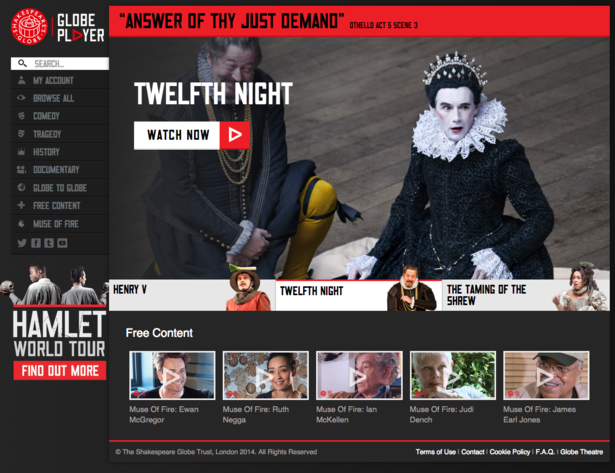Globe shows on demand
At last, I’m so excited to share that Globe Player relaunched at Shakespeare’s Globe in December 2021.
The new video-on-demand website not only feels fresh and lives up to the Globe brand, but it’s now also easy to access and navigate, integrates seamlessly with the Globe’s ticketing and CRM platform Tessitura, and offers a subscription service and access to single paid videos.
If you are a cultural organisation in the throes of re-platforming a video-on-demand platform, or thinking of undertaking a similar project, here are some insights I thought I’d share from defining, developing and delivering this project for the Globe.
For dramatic effect, below are the 7 deadly sins when re-building a video-on-demand platform and re-designing the experience.
Problems that needed solving
Globe Player was long overdue not just for a brand refresh, but more importantly for a re-platform – the platform that was making the videos playable online was coming to the end of its life. It was built in 2014, long unmaintained and putting customers’ data at risk.
This also meant that features often didn’t work as expected, resulting in unhappy customers, which put a strain on the digital team manning the customer service for Globe Player. It also had its own app in the App Store – this too was unmaintained and causing a lot of unfixable, persistent pain.
Screenshot of the old Globe Player in desperate need of a re-platform and accessibility improvements
The Globe Player site didn’t have any tracking, which made understanding the pain points in the customer journeys very difficult. The platform didn’t integrate with Tessitura, making it difficult to understand exactly how engaged users were with Globe Player, or in fact who they were in the context of the Globe audiences at large.
Lastly, the site was difficult for users with access needs, in particular those needing to use screen readers or magnifiers. Captions and audio descriptions on actual video content were ad hoc and inconsistent.
After many deep-dive stakeholder interviews, situational analysis and many scoping discussions, together with key stakeholders at the Globe, we decided that the goals of the project were to:
Offer the best-in-class experience for customers
Consolidate and move all customer and order data to Tessitura
Create a single-login experience for customers – no matter if visiting the theatre’s website or the Globe Player site
Improve accessibility and usability – particularly on mobile and tablet devices
Offer an easy way to pay for and watch single videos on demand
Improve the watching experience for customers
Introduce a subscription service to further maximise revenue
Reach more audiences outside of London and abroad – with a focus on the US
Reach more audiences who have access needs
The project took six months to complete and required us to shift the content and customer data from one platform to a new one, as well as redesign the experience – apply a new, on-brand skin onto the new platform while ensuring the UX was easy, intuitive and accessible.
To help you visualise what we were trying to do – imagine moving from constantly fixing this shed…
… towards creating an inviting, accessible and valuable house extension, which makes people feel good every time they spend any time there.
So with that in mind, here’s my learnings and insights from the journey of bringing the new Globe Player to life.
1. ‘This product is for everyone’
Instead… Define exactly who your target audience is – and isn’t.
As with any new digital product, there’s sometimes a tendency for stakeholders to put all their dreams into that next new thing.
With Globe Player, this was understandable particularly because the Globe is already active with all things video – on Drama Online Library, on Shakespeare’s Globe’s YouTube channel, there’s a lot of video-based learning content available, and The Globe sometimes live-streams their shows.
However, to set the project up for success and to define its goals, it was important to establish who Globe Player was for and who we were trying to reach:
Globe’s international audience – with target being the US
Other, primarily English-speaking international audiences that can’t see or experience a show at The Globe any time soon
Domestic audiences who can’t access the building or get to London easily, or both
Audiences interested in Globe’s shows for entertainment in their leisure time, not for educational purposes
Conversely, we were also very clear about who the platform was not for. This helped us focus and anchor the conversation with stakeholders and establish clarity around goals.
These were:
Audiences attending live shows and tours at The Globe – we knew experiencing the building was a crucial component of their visits
Teachers who currently use Drama Online to access Globe’s content for educational purposes
Audiences specifically interested in Globe’s content for the purposes of professional development or their work as educators – simply because their needs were specialised and diverse
Audiences specifically interested in Globe’s archive material
This was important to communicate to stakeholders right at the start of the project to manage expectations – and understand the product goals within the context of the target audiences.
2. ‘We don’t know much about our existing customers’
Instead… Get all the data you can get your hands on to understand their behaviour.
We knew the existing Globe Player customers were in the thousands, but due to no tracking on the site, we were yet to find out how many of them were still active or had valid email addresses. We needed to understand who the customers were and what the opportunity was.
Together with the Head of Data and Insights and the Finance teams, we ran manual comparisons of the databases in Globe Player and Tessitura and the payment systems to understand any overlaps and identify where revenue from existing Globe Player customers had come from to date.
How many Globe customers did also have Globe Player accounts? How many of them were members? How else have they engaged with the Globe over the years? These were just some of the questions that helped us narrow down how to reach the right audience once the new Globe Player drops.
Prior to the project starting, the brilliant digital product agency Substrakt ran discovery sessions which included surveys to the existing customer cohort – from these insights, we were able to patch together some of the data gaps.
The results were insightful and helped us understand and define exactly who to target at the re-launch of the new Globe Player – while articulating the right messaging, in response to their pain points.
3. ‘Let’s define the goals after procuring a technical partner’
Instead… Get the right technical partner to help you reach your goals.
I have seen time and time again organisations issuing briefs and RFPs and contracting a technical partner without project goals defined. This is generally ok for integration-free, content-rich sites where technical provider capabilities can be narrowed down to platform-specific expertise.
When it comes to re-platforming, establishing clear goals before securing a technical partner are a must.
Is your goal to build and grow a subscriber base? To launch very fast to monetise on a lot of ready-to-go content as quickly as possible? Or to understand detailed watch data and viewing patterns of your customers on each video you go live with?
Answers to these questions will point you to different technical providers and platforms that will vary in features.
It was important to define both organisational goals and needs, as well as what the re-platform needed to achieve for audiences – and to translate these needs into must-have product requirements.
The full list of goals for Globe Player were as follows:
Increased sales of single VODs
Establish and grow the Globe Player subscriber user base
Increased conversion from viewing VOD page to buying VOD
Increased unique playbacks/ views
Increased hours, across more content watched by unique users
Increased orders and usage by users with access needs
Increased sales of VODs/ subscriptions after live streaming
Positive qualitative user feedback on Globe Player
For Globe Player, we established that rather than to prioritise watch data, it was more important for the customer data to integrate with The Globe’s Tessitura CRM database. This pointed us to two potential platforms – Vimeo OTT and Showcase by Substrakt (who we eventually went for).
4. ‘We don’t need software expertise to find a technical partner’
Instead… Find a senior engineer to help you investigate the proposed technical architecture.
You’re going for the long haul with a new platform. Unless you have an in-house digital team that has software expertise and established technical leadership, get someone technical and trusted to help you grill the potential technical partner. (I was very lucky to have worked with Chris Uzelac from the Globe’s Board.)
Except for being very passionate about culture and the Globe, Chris is an experienced systems engineer based in San Francisco. He was the principal software engineer of Square Inc. in their early days.
He provided helpful advice on finalising the product scope requirement documents I’d created for the Globe Player tender, but also attended product demos with me and demanded:
a) talking to other engineers only
b) how technical architecture has been thought through and why
c) clear answers around how their technical abilities matched our needs.
Always try to speak to engineers at product demos when you are deciding between platforms and have your technical requirements set.
Get answers to how the product works currently, and not what will be live at some point on their roadmap (and their terms).
Try and wield out the sales reps who often facilitate the demos and have a tendency to sell you dreams (and all the possible future features).
5. ‘We can just repurpose our existing content’
Instead… Secure a generous content production budget before re-platforming starts.
Expectations around film and video on demand have gone through the roof since 2020. Netflix, BBC iPlayer, Amazon Prime, you name it – these platforms are adding dozens of new, high quality content pieces to these platforms every day.
The user experience is seamless. Content is available at a touch of a few calls to action – on laptops, phones and tablets.
Today, video-on-demand platforms require new, frequently added, fresh content in order for audiences to come back for more.
There is simply too much competition!
You will need to adopt the same approach and have plenty of content to keep your audiences engaged – especially if you are building a subscription service.
There is no point in building a subscription service and features if the content quality and frequency can’t warrant the value of the subscription.
Unless you have produced a lot of content specifically for your video-on-demand service already, you need to budget for ongoing content production of your shows – and possibly other adjacent content – and secure a production partner.
Get this budget secured at a Board level way before you start with the re-platforming project.
After you’ve relaunched, you don’t want your marketing efforts to stall when users don’t have anything new to come back for.
6. ‘Content guidelines need to be flexible’
Instead… Articulate and share clear and concise content principles.
Once you have content production approved, you want to make sure the content lives up to the project goals – and fits in with your organisation’s brand values.
For Globe Player, we established four key rules to all content production. In order for a video to be added to the platform, it must meet all of the below principles.
Monetisable – it’s content created for the purposes of selling it
Top quality – content with high production values
Current – shows what The Globe values are about (this weeded out some past Globe productions, which don’t reflect The Globe today)
Accessible – subtitles and audio descriptions must be added on all content
Once your content has gone through a filter of rules that your organisation needs, agree on the frequency around which new content gets added to the platform and the marketing around this.
7. ‘We’ll figure out the team later’
Instead… Map out the ideal workflows around your new product and assign responsibilities.
Video on demand platforms – like many digital products are one of those Trojan horse projects that often result in varying levels of digital transformation and conversations around roles, responsibilities and capacities missing.
Your video-on-demand platform at launch will be no other.
It will not only require a digital content team to add new content to the site, a technical partner to maintain it, but also a customer service team, a data insights team, a content production team, a team that creates subtitles and audio descriptions, a marketing team – and the subscription service will also make you rethink how membership at your organisation.
If you also plan to do live-streaming, for example, this endeavour will not only need a live-streaming team, but also a team that manages the live-stream on the platform when a show goes live and communicates with customers on social media and via box office.
It’s a huge undertaking, which will require cross-functional teams to come together.
My recommendation is to appoint the product owner at your organisation – before the project starts – their role is to be responsible for the project and to map out a team to service it, beyond just its launch.
A product owner is in charge of and accountable for the project’s success – this person cares the most when it goes wrong.
The product owner always champions the user and prioritises their needs while managing, balancing and meeting the business goals of the project.
The product owner is ultimately responsible for product decisions to help the user have the best user experience. This process doesn’t end when the platform goes live, but is an ongoing effort of optimisation.
Lastly, map out what your current workflows look like and how they need to be improved.
The success of a digital product ends with dysfunctional inefficient workflows of the teams that need to look after it after launch.
Ensure that you know the pain points and inefficiencies in your teams – part of the success of the new project is removing them, and finding better ways for teams to work together, and deliver a supreme experience for your audiences.
With that in mind, enjoy the new Globe Player!
In conclusion
The new Globe Player was an incredible project to work on – rarely do I get to work on defining a product, choosing a new platform, helping to appoint a technical partner – and seeing it through to delivering it.
Good luck with your digital equivalent of a value-adding house extension.
I hope these insights help you out in how you frame your own re-platform project. If you have any questions, or would like any more pointers, don’t hesitate to reach out and ask.




